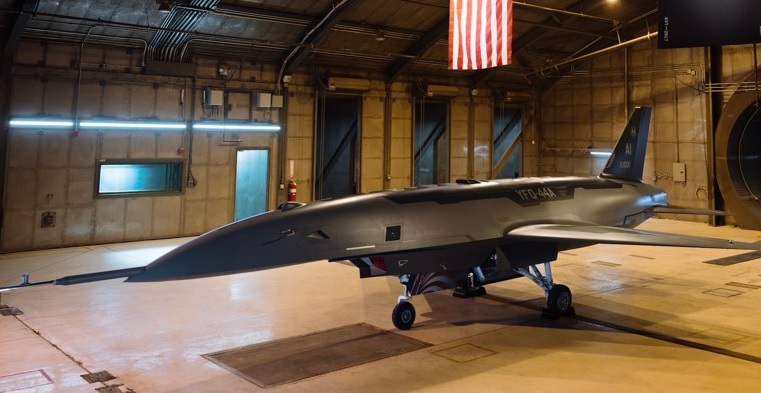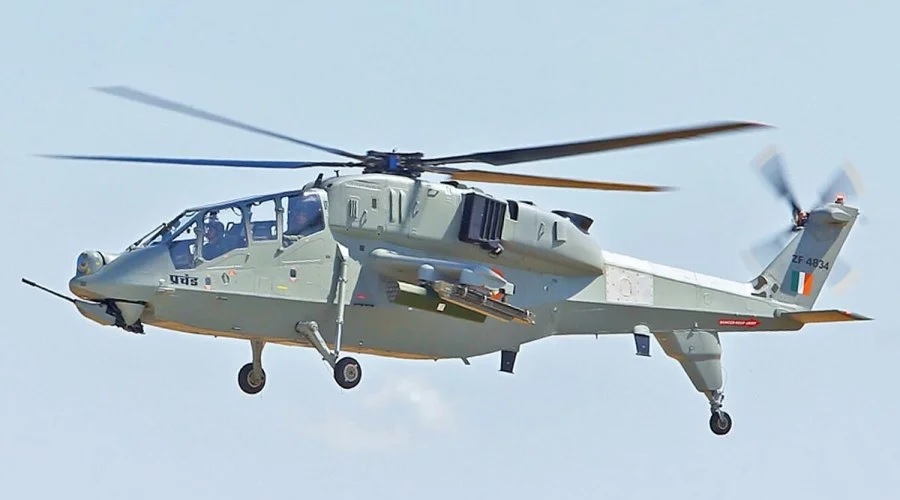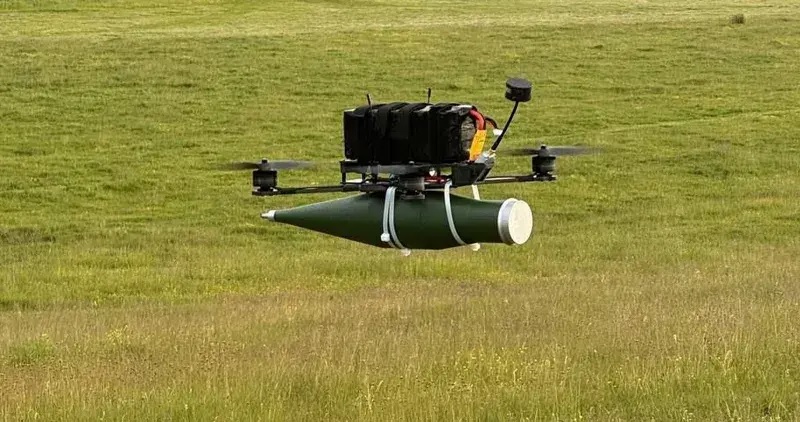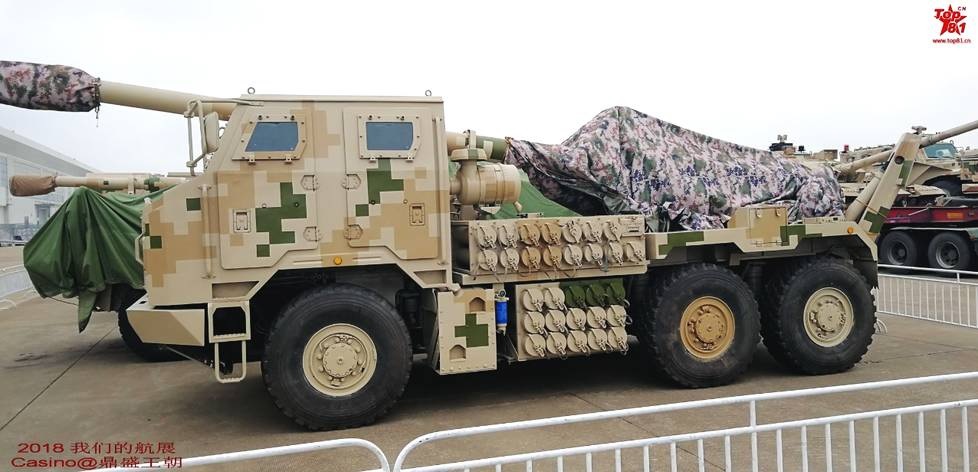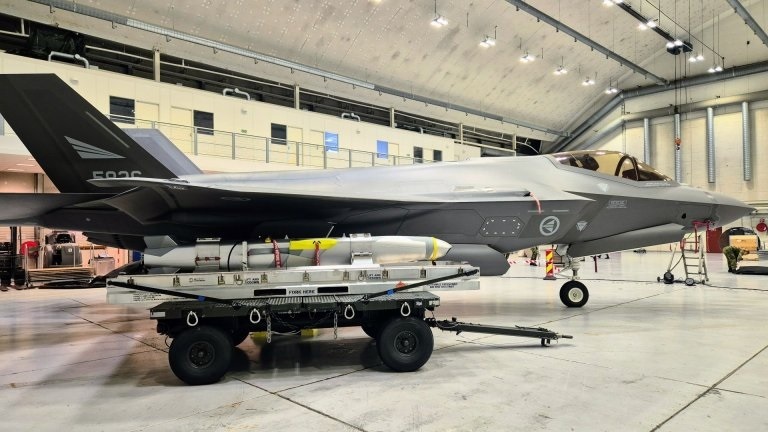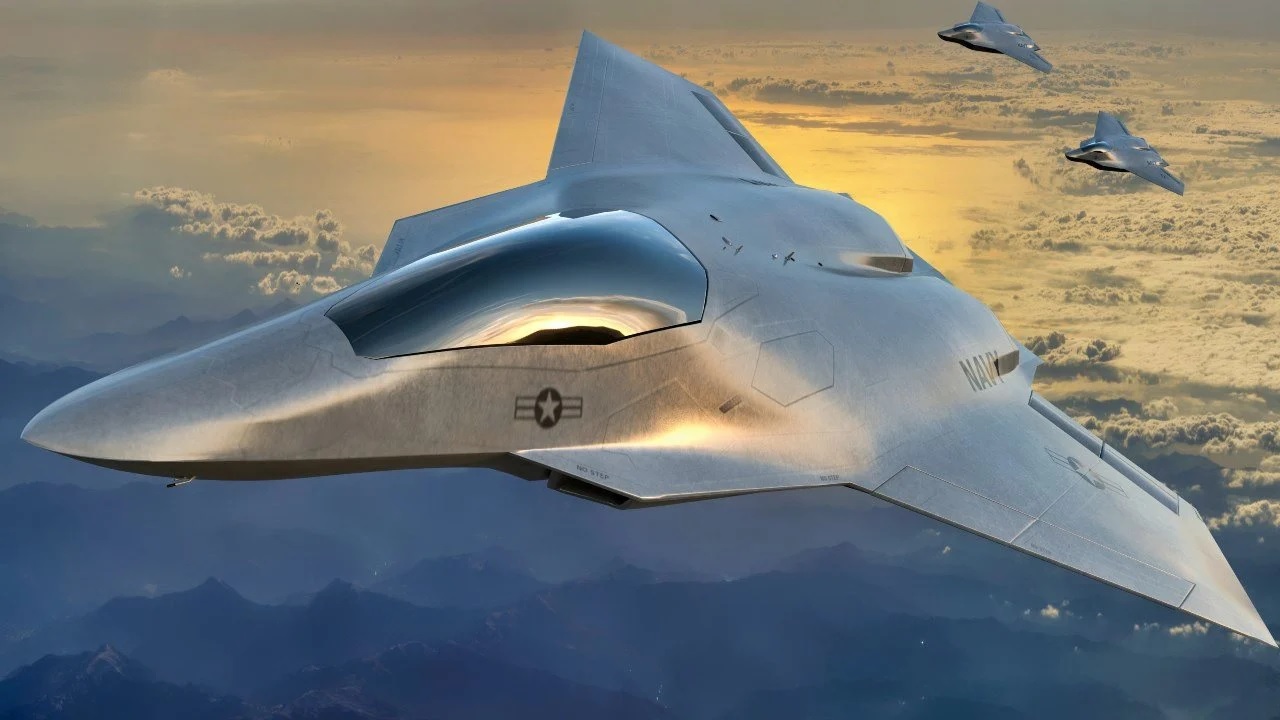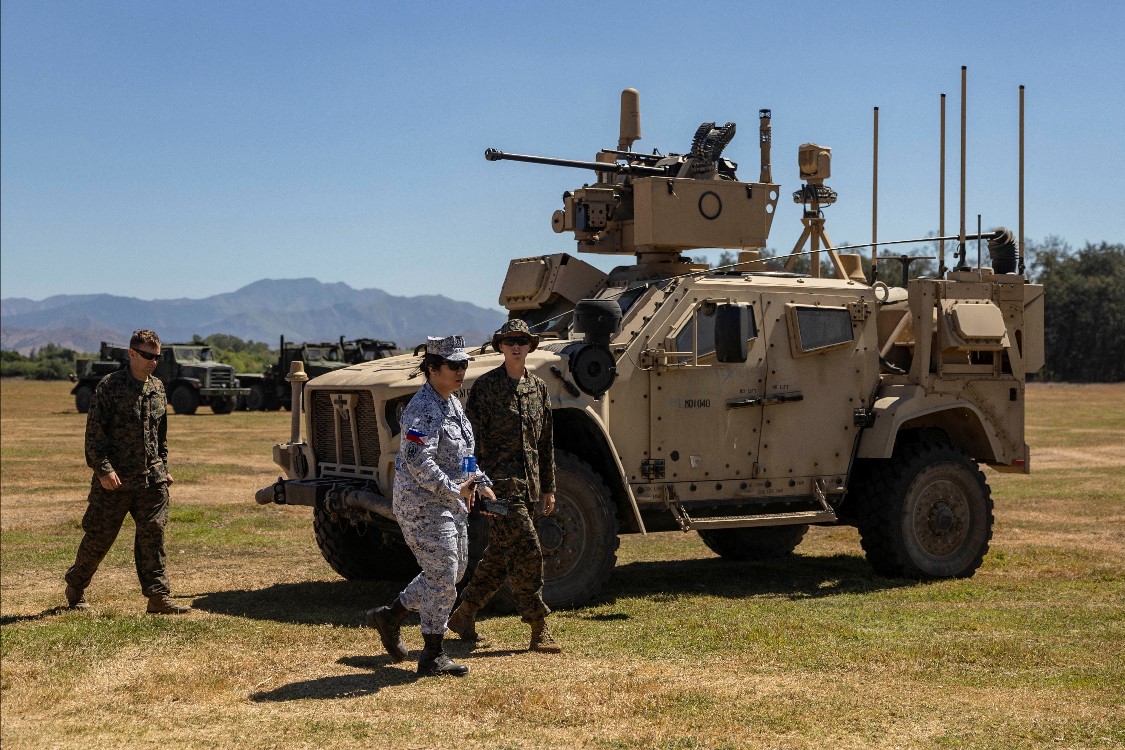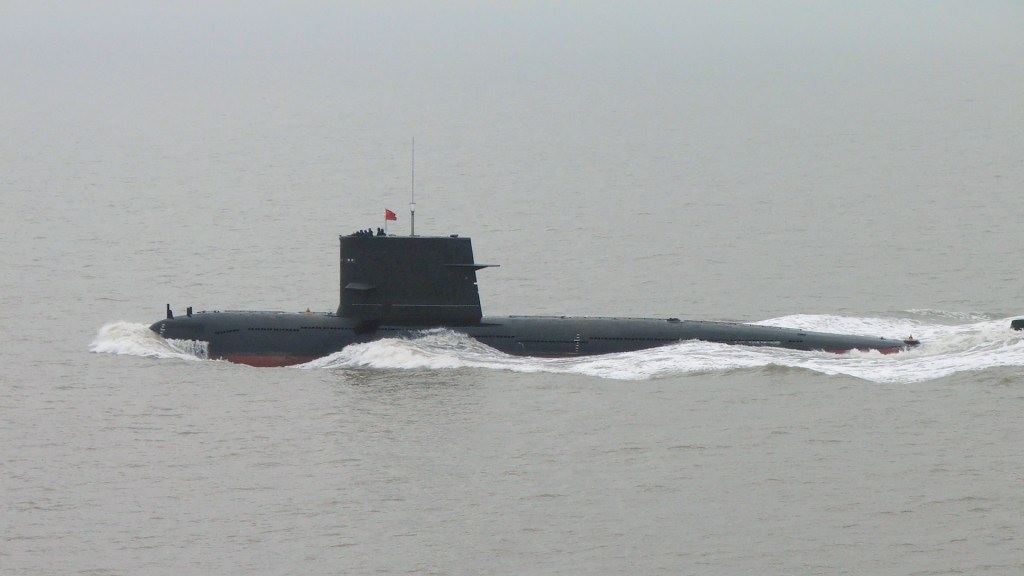World
The United States Air Force has officially begun ground tests for two advanced unmanned combat aerial vehicles (UCAVs) under its Collaborative Combat Aircraft (CCA) program — a major step toward the future of aerial warfare. These drones, named YFQ-42A and YFQ-44A, represent the first experimental fighter drones to receive official designations in Air Force history, marking a significant milestone in the program’s evolution. Currently stationed at Beale Air Force Base in California, the two aircraft are undergoing thorough evaluations of their engines, onboard systems, autonomous capabilities, and control technologies. The tests are part of a larger plan to prepare these drones for flight trials scheduled later this year. Even though flight operations will be limited for now, both aircraft are being kept in a constant flight-ready state. The CCA program aims to revolutionize air combat by introducing highly capable drones that can fly alongside traditional fighter jets, essentially acting as robotic wingmen. These aircraft are designed to increase the range, lethality, and survivability of manned platforms by taking on missions that would otherwise put human pilots at risk. General David W. Allvin, the Chief of Staff of the U.S. Air Force, emphasized the importance of the program, stating, “CCA is about delivering decisive advantage in highly contested environments. The program is accelerating fielding through innovative design and acquisition strategies — and both vendors are meeting or exceeding key milestones.” He further added, “These aircraft will help us turn readiness into operational dominance.” The YFQ-42A, developed by General Atomics, has a sleek and futuristic design tailored for high-speed missions. Its elongated body, narrow wings, and top-mounted air intake suggest it is built for stealth and speed — qualities essential in next-generation air dominance roles. On the other hand, Anduril’s YFQ-44A is more compact — roughly half the size of an F-16 jet — and features a distinctive set of design elements, including trapezoidal wings and a unique tail configuration. This drone seems optimized for agility and modular payloads, offering flexibility across a wide range of mission profiles. Both drones are part of the Air Force’s broader Next-Generation Air Dominance (NGAD) vision, which focuses on pushing the boundaries of aerial technology and ensuring that future U.S. airpower remains unmatched. One of the key goals of this effort is to reduce dependence on foreign suppliers and ensure that critical capabilities are developed and produced domestically. As testing progresses, these drones could change how the U.S. military conducts air operations, blending manned and unmanned platforms into a cohesive and lethal force structure. Their success could lead to quicker deployments and reshape the battlefield of tomorrow.
Read More → Posted on 2025-05-02 15:24:26World
In a striking show of precision and speed, Ukrainian air defence crews recently intercepted 11 Russian cruise missiles in under two minutes using NASAMS (National Advanced Surface-to-Air Missile Systems). The operation, which Ukrainian Air Force Lieutenant Colonel Kyrylo Peretyatko described as potentially a world record for reload speed, highlights the growing sophistication of Ukraine’s defensive capabilities amid the ongoing war. The feat took place during a mass Russian aerial attack, though the exact date of the engagement remains undisclosed. In a video released on 27 April, Peretyatko emphasized the efficiency and determination of Ukraine’s forces, stating that such rapid response is becoming routine. "We probably broke all records of other countries," he said, "and we are ready to keep doing it constantly to defend our country, as long as we have the missiles.” NASAMS, developed jointly by the United States and Norway, have been operational in Ukraine since late 2022. These systems use the AIM-120 AMRAAM missile, commonly deployed on Western fighter jets, and can engage targets up to 50 kilometres away depending on the configuration. The system's mobility, precision, and fast response time have made it an essential part of Ukraine’s layered air defence network, especially in the face of increasing missile and drone assaults from Russia. Ukraine has consistently appealed for more air defence systems from Western allies. President Volodymyr Zelensky has even offered to buy U.S.-made Patriot missile batteries, although that offer was declined by former President Donald Trump. Despite this, Ukraine's forces continue to perform remarkably well with the systems they do have. Just last week, Ukrainian air defence reportedly downed over 230 drones, 442 Shahed loitering munitions, 31 cruise missiles, seven Iskander ballistic missiles, and several Kalibr and Kh-59 missiles. While Ukraine continues to defend its skies with cutting-edge systems, Iraq has taken a significant step in upgrading its own air capabilities. On 30 April, Airbus announced the delivery of the first two H225M Caracal multi-role helicopters to the Iraqi Ministry of Defence. This marks the beginning of a 12-helicopter deal signed in September 2024. The H225M Caracal helicopters will be used for various missions in Iraq, including troop and equipment transport and support for special operations. These helicopters are equipped with the HForce system, which allows integration of externally mounted weapons, boosting their combat capability. The new Caracals are expected to eventually replace the older Mi-17 helicopters currently used by Iraqi forces. With security concerns still present in several parts of Iraq, especially from internal militant groups, the introduction of modern, multi-role helicopters is seen as a crucial step in strengthening operational readiness. Iraq has been steadily modernizing its armed forces, and Airbus has been a key partner in this effort. Prior to this delivery, Iraq had received 24 H135 helicopters from Airbus, used primarily for reconnaissance, liaison, and ground support roles. As both Ukraine and Iraq continue to navigate complex security landscapes, their investment in modern, flexible defence technology underscores a broader trend: smaller and mid-sized nations are increasingly relying on advanced Western systems to meet the challenges of modern warfare.
Read More → Posted on 2025-05-02 15:21:40India
India’s homegrown Light Combat Helicopter (LCH), HAL Prachand, is about to receive a significant boost in its firepower. A newly developed indigenous 80mm unguided rocket system is set to be integrated into the helicopter’s arsenal, marking a major step forward in strengthening India’s defence self-reliance and battlefield capabilities. This new weapon system has been jointly developed by TridenTech Engineering, IIT Madras, Bharat Electronics Limited (BEL), Reliance Aerospace Limited (RAL), and BILVA Technologies. It’s designed to replace the currently imported 70mm FZ275 Laser Guided Rockets (LGR), which are supplied by the global aerospace firm Thales. Why This Upgrade Matters The switch to an indigenous 80mm rocket system offers several important advantages: Extended Range:While the imported 70mm FZ275 LGR has an effective range of around 7 kilometres, the new Indian-made 80mm rockets can strike targets between 10 to 12 kilometres away. This increased range allows the Prachand to engage enemies from a safer distance, reducing the risk of counterattacks and improving crew survivability. Versatile Warhead Options:The new 80mm rockets can be fitted with different types of warheads based on mission requirements: HEAT-Frag (High-Explosive Anti-Tank Fragmentation): Effective against armoured vehicles. Thermobaric Warheads: Ideal for clearing bunkers, buildings, and fortified positions with intense blast effects. Anti-Runway Munitions: Designed to disable enemy airfields and airstrips. Illumination Rounds: To light up the battlefield during night operations. This flexibility means the Prachand can adapt to various combat situations — whether it’s anti-armour, suppression of enemy positions, or nighttime missions. Future Developments While the first version of the new 80mm rocket system is unguided, there’s already work underway on a laser-guided variant. Once completed, it will offer precision strike capability with an entirely indigenous system. This not only reduces dependency on foreign suppliers but also strengthens India’s operational control and logistics. The move aligns with India’s broader ‘Make in India’ initiative in the defence sector, aimed at enhancing local production of critical military technologies and cutting down on imports of high-value weapon systems. HAL Prachand LCH: Quick Specifications Crew: 2 (Pilot + Gunner) Maximum Speed: Around 268 km/h Operational Ceiling: 6,500 metres Armament: 20mm nose-mounted turret gun 70mm FZ275 LGR (to be replaced by indigenous 80mm rocket system) Anti-tank guided missiles (ATGMs) Air-to-Air missiles Features: Crash-worthy structure and landing gear Armour protection Advanced electronic warfare systems Capable of operating in high-altitude areas, including the Himalayas The integration of this new 80mm multi-warhead rocket system is a significant leap for the Prachand LCH. It not only increases its battlefield flexibility and operational reach but also marks a proud milestone for India’s growing domestic defence industry. With future plans for a laser-guided variant, the Prachand is set to become an even more lethal and self-reliant combat platform for the Indian armed forces.
Read More → Posted on 2025-05-02 15:20:33World
In a significant step towards modernising its military capabilities, Iraq has received its first two H225M Caracal helicopters from Airbus. The delivery was officially announced on April 30 and marks the beginning of a larger deal involving a total of twelve helicopters, signed in September 2024. The H225M Caracal is a powerful, multi-role transport helicopter designed for versatility in challenging environments. For Iraq, these helicopters will support a wide range of military operations, including transporting troops and equipment, and conducting missions with special operations forces. These aircraft are set to gradually replace the aging fleet of Soviet-era Mi-17 helicopters currently used by the Iraqi military. One of the key features of the helicopters delivered to Iraq is the advanced HForce weapon system, which allows the aircraft to carry and operate externally mounted weapons. This system significantly increases the helicopter’s operational flexibility and firepower, making it well-suited for both conventional and counter-terrorism missions. With ongoing threats from extremist groups within the country, the new helicopters are expected to play a vital role in strengthening Iraq’s internal security. The H225M Caracal, produced by Airbus, is already in service with several countries around the world. France, Brazil, Hungary, Indonesia, Kuwait, Malaysia, Mexico, Singapore, and Thailand are among its current operators. The Netherlands is also set to receive the Caracal for use by its special forces. This latest delivery adds to Airbus’s growing footprint in Iraq. In previous years, Airbus supplied the Iraqi Ministry of Defence with 24 H135 helicopters, which are used for roles such as observation, communication between units, and light ground support. Iraq’s ongoing efforts to upgrade its military equipment reflect a broader push to strengthen national defense and reduce reliance on outdated technology. The arrival of the H225M Caracals marks a significant milestone in this process, enhancing the Iraqi armed forces’ readiness for both internal and external challenges.
Read More → Posted on 2025-05-02 15:14:28World
Bittium and Nokia have successfully demonstrated a next-generation hybrid tactical communications network for the Finnish Defence Forces, marking a major step forward in military communications technology. By combining Bittium’s advanced tactical systems with Nokia’s secure 4G/5G mobile networks, the companies showcased how modern wireless technology can strengthen battlefield connectivity and operational command. This hybrid network approach allows seamless integration of 4G/5G coverage “bubbles” into traditional tactical communication structures. That means soldiers and command centers can now maintain real-time communications and share vital data even in remote or complex environments. The system also supports interoperability with civilian and government networks, making it easier to coordinate with other authorities during joint missions or crisis responses. During the demonstration, Bittium and Nokia showcased several key capabilities of the system. These included real-time voice communication across various devices, live video transmission, and situational awareness tools that provide a clear picture of the battlefield. Central to these achievements was Bittium’s server-independent and distributed network design, which ensures that communications remain reliable even if individual components are disrupted. Tommi Kangas, Senior Vice President of Bittium’s Defense & Security business, explained that the demonstration confirmed the compatibility of Nokia’s mobile network solutions with Bittium’s tactical systems. “The 4G/5G solutions don’t replace tactical networks but enhance them,” he said, emphasizing how this hybrid approach creates a broader and more capable communication framework for military operations. From Nokia’s side, Giuseppe Targia, Head of Space and Defense, called the achievement a major milestone. He highlighted how this integrated system ensures secure, high-speed, and resilient connectivity even in the most demanding operational conditions. According to him, it will significantly improve decision-making speed and mission effectiveness. The technologies involved in the demonstration included Bittium’s Tactical Wireless IP Network™ (TAC WIN), Tough SDR™ radios designed for both vehicles and individual soldiers, and Nokia’s Banshee Mobile and Tactical Radios. Together, they powered military-grade applications running on rugged smartphones like the Bittium Tough Mobile™2, all supported by the Bittium Tough VoIP Service™ for secure voice communication. This successful showcase signals a new era of advanced, hybrid military networks designed to meet the evolving demands of modern defence operations. It demonstrates how cooperation between defence tech companies can deliver flexible, future-proof solutions to keep soldiers connected and commanders informed—no matter the mission.
Read More → Posted on 2025-05-02 15:11:28World
Ukraine continues to strengthen its battlefield technology with the formal deployment of the ‘Hromylo Optic’ drone, a domestically produced unmanned aerial system (UAS) designed to strike enemy tanks, armored vehicles, and fortified positions along the frontlines. This advanced drone has already seen combat in various forms, proving highly effective in destroying enemy equipment. In response to operational demands from troops on the ground, the manufacturer recently introduced an upgraded version of the Hromylo Optic with a larger 24-centimeter (10-inch) frame. This enhancement enables the drone to carry heavier and more destructive explosive payloads, powerful enough to destroy even heavily armored tanks. Advanced Guidance and Targeting Capabilities One of the standout features of the Hromylo Optic is its fiber-optic guidance system. Unlike traditional radio-controlled drones, this system significantly reduces the risk of the drone being disrupted by enemy electronic warfare and jamming equipment — a serious threat in modern conflict zones like Ukraine. For operational flexibility, the drone also comes equipped with daylight, low-light, and thermal imaging modes, allowing it to identify and engage targets at any time, whether in daylight, at night, or in poor visibility conditions. Specifications of the Hromylo Optic Drone Frame Size: 24 cm (10-inch) Guidance System: Fiber-optic cable link (jamming-resistant) Payload: High-explosive charges capable of destroying tanks and fortified positions Imaging Modes: Daylight, low-light, and thermal Operational Use: Tank strikes, armored vehicle destruction, enemy firing position neutralization A Growing Focus on Domestic Drone Technology This deployment is part of Ukraine’s ongoing efforts to expand its fleet of locally produced unmanned systems in response to Russia’s advanced military capabilities. The country’s defense industry has been rapidly innovating, with nearly 40 fiber-optically guided drones adopted since the beginning of the year — 15 of them in April alone. In addition to aerial drones like the Hromylo Optic, Ukraine recently introduced an uncrewed surface vehicle capable of firing laser beams and launching drone swarms, as well as conducting its largest trial of unmanned ground vehicles, where over 70 drones from 50 domestic manufacturers were tested together. Deputy Minister of Defence of Ukraine, Valerii Churkin, emphasized the importance of speed and innovation, stating, “Those who are quickest to implement innovative solutions gain the advantage. We cannot underestimate the enemy’s technical progress. We must outpace them.” With systems like the Hromylo Optic now officially joining frontline operations, Ukraine continues to reinforce its strategy of high-tech, locally developed warfare tools to counter evolving battlefield challenges.
Read More → Posted on 2025-04-29 15:43:37India
In a concerning development for regional security, the Pakistan Army has deployed several dozen Chinese-made SH-15 155mm self-propelled howitzers near the Indian border. These advanced artillery systems have been stationed roughly 80 kilometres from the Line of Control (LoC), significantly increasing the military threat level in an already tense environment. This deployment follows a tragic terrorist attack in Pahalgam, Jammu and Kashmir, which claimed the lives of 26 tourists. The incident led to a sharp rise in hostilities between India and Pakistan, with both sides taking tough diplomatic and military stances. What is the SH-15 Howitzer? The SH-15, known as the PCL-181 in Chinese military service, is one of the most modern artillery systems currently available to Pakistan. It was first unveiled in China in 2017 and later delivered to Pakistan under a 2019 deal for 236 units. Mounted on a 6x6 Shaanxi military truck chassis with a protective armoured cabin for the crew, the SH-15 combines firepower, speed, and mobility. It is designed for rapid deployment and repositioning, giving it a tactical edge in mountain and border areas like those near the LoC. Key Specifications and Capabilities The SH-15 is armed with a powerful 155mm/52-calibre gun capable of firing various types of ammunition. Its capabilities include: Maximum Firing Range: 20-30 kilometres with standard shells Up to 53 kilometres using rocket-assisted projectiles Ammunition Compatibility:The system can fire both Chinese and NATO-standard ammunition, as well as precision-guided shells. Fire Control and Targeting:It uses an advanced computerized fire control system with GPS navigation, allowing for quick targeting adjustments and high firing accuracy. Firing Rate:Capable of firing 4 to 6 rounds per minute. Mobility:Thanks to its "shoot and scoot" ability, the SH-15 can quickly relocate after firing, reducing the risk of enemy counter-attacks. This combination of long-range firepower, fast repositioning, and precision-guided capability significantly improves Pakistan’s artillery strength along the border. Why This Deployment Matters The arrival of SH-15 howitzers so close to the LoC is a serious military signal. From these positions, major Indian cities like Amritsar and sensitive military installations could theoretically be within artillery range. Such a move not only boosts Pakistan’s deterrence posture but also raises the possibility of rapid escalation if cross-border tensions worsen. There are also reports suggesting that some of these howitzers have been placed in or near populated urban areas, a controversial tactic seen in other conflicts like the war in Ukraine. While officially unconfirmed, such actions could complicate retaliation options for India, due to the risk of civilian casualties. A Strained Regional Situation This military deployment comes during a period of deep mistrust between the two nuclear-armed neighbours. After the Pahalgam attack, India accused Pakistan of backing cross-border terrorism, suspended the Indus Waters Treaty, and stepped up military activity along the border. Pakistan, in response, denied involvement, suspended the Simla Agreement, closed airspace to Indian flights, and warned of a possible Indian military strike. Sporadic clashes and artillery exchanges have since taken place along the LoC. Pakistan’s deployment of SH-15 self-propelled howitzers near the India border marks a significant escalation in military preparedness. It highlights the growing risk of conflict in the region, especially given the ongoing disputes over Kashmir and the breakdown of diplomatic ties. The presence of these modern artillery systems adds a new dimension to the already fragile peace along the India-Pakistan border. In the absence of effective dialogue and confidence-building measures, the danger of a serious military confrontation remains worryingly high.
Read More → Posted on 2025-04-29 15:38:24World
In a significant move for modern battlefield technology, U.S.-based MSI Defense Solutions has partnered with Romanian software company OVES Enterprise to jointly develop advanced counter-drone systems. The collaboration, formalised through a strategic memorandum, aims to combine OVES’s cutting-edge Nemesis AI platform with MSI’s proven EAGLS™ counter-UAS system, creating a powerful, autonomous defence solution for the future. Why This Partnership Matters The growing use of autonomous drones and unmanned aerial vehicles (UAVs) in combat zones has posed new challenges for military forces worldwide. Traditional defence systems often struggle to detect, track, and neutralise these fast, small, and unpredictable threats. By integrating artificial intelligence directly into defence platforms, MSI and OVES are aiming to offer a next-generation solution capable of handling these challenges in real-time. Nguyen Trinh, CEO of MSI Defense Solutions, explained the significance:“This is about shortening kill chains, reducing operator burden, and delivering an affordable, autonomous layered defence system that can outpace modern drone threats at the tactical edge.” What Is the EAGLS™ System? The EAGLS™ (Expeditionary Air-Ground Launch System) is a lightweight, mobile, radar-enabled counter-UAS platform already equipped with: 360° radars for all-around situational awareness Laser-guided rockets for high-precision interceptions Remote weapon stations (RWS) for flexible engagement options Its modular design makes it suitable for land vehicles, naval ships, and forward-operating bases. It was originally developed to detect, track, and destroy small UAVs and low-flying threats. How Nemesis AI Will Enhance EAGLS™ By integrating the Nemesis AI platform, EAGLS™ will gain advanced autonomous capabilities: Real-time threat recognition and classification using AI-powered image processing Super Sensor Fusion: A combination of RGB, thermal, and neuromorphic cameras providing advanced multi-spectral tracking Kill-chain automation: AI determines the most effective interception method instantly, without human intervention Radar and GPS-free operation: Capable of intercepting targets using only visual sensors — a rare and valuable feature not widely available globally AI-optimised turret control: Faster, more precise gun or missile targeting based on real-time data Moreover, OVES Enterprise will supply AI-specific processing hardware capable of handling large amounts of data at high speeds, ensuring no delays in detection or engagement even during complex, multi-drone attacks. Why This System Stands Out One of the key advantages of this new AI-powered C-UAS (Counter-Unmanned Aircraft System) is its cost-effectiveness. Early estimates suggest it could be up to 50% less expensive than comparable systems currently in service. The integration of Nemesis AI also allows for better independence from external technologies and networks, making it highly resilient in electronic warfare environments. Mihai Filip, CEO of OVES Enterprise, shared his perspective:“We’ve demonstrated that this isn’t just another recognition tool. It’s a complete platform that analyses, decides, and acts in real-time on the battlefield.” Specifications Snapshot Feature Details Detection Sensors RGB, Thermal, Neuromorphic Cameras, 360° Radar Interception Methods Laser-Guided Rockets, Remote Weapon Station (RWS) AI Integration Nemesis AI for detection, classification, and engagement Special Capability Visual-only interception (without radar/GPS) Turret Control AI-driven for rapid and precise target engagement Hardware AI-accelerated, high-volume data processing units Mobility Lightweight, vehicle-mounted, and naval-compatible Estimated Cost Savings 50% less than comparable systems Looking Ahead As drone warfare becomes an increasingly important concern for defence planners, systems like this AI-enhanced EAGLS™ will play a vital role in securing military assets and infrastructure. The MSI-OVES partnership highlights how the integration of artificial intelligence into defence platforms isn’t just an upgrade — it’s a necessity for the modern battlefield. The project is expected to set a new standard for mobile, autonomous, and cost-effective counter-UAS systems in both military and homeland security applications.
Read More → Posted on 2025-04-29 15:34:41India
In a major step toward self-reliance in defence, the Indian Air Force (IAF) has decided to retire its ageing fleet of Soviet-origin Mi-35 Hind attack helicopters by the 2030s and replace them with the homegrown Light Combat Helicopter (LCH) Prachand. This move not only signals a shift in operational priorities but also strengthens India's commitment to indigenous defence production. The Mi-35, a veteran helicopter in the IAF’s arsenal, has served since the 1980s. Known for its heavy armor, troop-carrying capability, and powerful weapon systems, the Mi-35 has been a reliable platform for close air support and anti-tank missions. However, with time and changing warfare needs, its relevance has begun to fade. To keep the Mi-35s flying until their retirement, the IAF is currently undertaking a major refurbishment programme in collaboration with Russia. This will help extend the life of the fleet through the rest of this decade. But the future clearly lies with the newer and lighter LCH Prachand. Developed by Hindustan Aeronautics Limited (HAL), the LCH Prachand represents a modern, agile, and high-altitude capable attack helicopter specifically designed to operate in India’s demanding terrain. Though smaller than the Mi-35 — with a maximum take-off weight of 5.8 tons compared to the Mi-35’s 11.5 tons — the Prachand offers exceptional maneuverability, especially in mountainous regions like Ladakh. One of the most significant aspects of this transition is the IAF’s decision to halt further imports of the American AH-64E Apache helicopters beyond the 22 units already in service. These were inducted between 2019 and 2021. By choosing the Prachand over additional Apaches, the IAF is clearly prioritising indigenous capability over foreign procurement. An IAF official explained that the LCH Prachand is set to become the largest attack helicopter type in the IAF’s inventory, underlining the level of confidence in its performance and future potential. This marks a clear endorsement of India’s efforts to develop world-class defence technology within the country. The LCH is not just lighter but smarter. It is equipped with advanced sensors, a 20mm nose-mounted cannon, rockets, and both air-to-air and air-to-ground missiles, including the Mistral 2 and India’s own Dhruvastra. It also features stealth design elements, modern avionics, and high survivability, making it highly suitable for present-day combat environments. The government has already begun inducting 15 Limited Series Production units of the LCH — 10 for the Air Force and 5 for the Army. But the real boost will come with the expected clearance of a large-scale procurement of 156 LCH units: 114 for the Army and 42 for the Air Force. Once approved, this order will place the LCH Prachand at the heart of India’s future combat helicopter fleet. The gradual replacement of the Mi-35 with the LCH Prachand is not just about retiring old equipment — it's about adopting a new strategy. The IAF is looking to future warfare, where speed, precision, adaptability, and self-sufficiency are more critical than brute force alone. And the Prachand fits this vision perfectly. By choosing an indigenous solution over additional foreign imports, the IAF is not only modernising its fleet but also sending a strong message: India’s skies will increasingly be guarded by machines built in India, for India.
Read More → Posted on 2025-04-29 15:21:41World
Anduril has taken a significant step forward in electronic warfare (EW) technology with the introduction of Pulsar-L, the latest addition to its Pulsar line of EW systems. This new system is crafted to deliver advanced signal detection, tracking, and disruption capabilities in a compact, highly portable form — making it ideal for modern, fast-moving military operations. What Is Pulsar-L? Pulsar-L, short for Pulsar-Lite, is designed to detect, identify, track, and neutralize electronic threats in diverse operational environments. Whether it's a battlefield, an urban combat zone, or remote outposts, this system is built to move with the mission. Traditional EW systems have often been bulky, complex, and fixed to specific configurations with limited flexibility. Pulsar-L changes that by offering a software-defined, modular, and lightweight solution that can quickly adapt to emerging threats and operational needs. This makes it especially valuable in situations where the enemy uses rapidly evolving tactics and electronic signals. Two Versions for Different Missions Anduril has developed two mission-ready versions of Pulsar-L: Airborne Configuration: Designed to be mounted on drones, helicopters, or other airborne platforms, providing real-time electronic threat tracking and disruption from the sky. Expeditionary Ground Unit Configuration: Tailored for ground forces and special operations units, this version is compact enough to be transported and deployed by small teams, with setup times reportedly as low as two minutes. This dual-configuration approach ensures Pulsar-L can support both offensive and defensive operations in various combat scenarios. Key Features and Specifications Here’s a closer look at what makes Pulsar-L stand out: Portable, Lightweight Design: Optimized for tactical edge deployment by small units and aircraft. Software-Defined Architecture: Allows easy updates, reprogramming, and adaptation to new threat types without hardware changes. Signal Detection and Disruption Range: Though precise figures remain classified, it is designed to effectively monitor and neutralize a wide range of electronic signals — including communication devices, drones, and radar systems — within its operational radius. Minimal Setup Time: Can be operational in two minutes, enabling rapid response in dynamic environments. Modular Construction: Allows integration with other EW tools and command systems. Compatibility with Anduril’s Lattice Software: Provides advanced data processing and threat visualization directly at the tactical level. Supports Networked Operations: Can seamlessly work alongside other Common Operating Picture (COP) solutions, enhancing situational awareness and operational coordination. Why It Matters Modern battlefields are increasingly electronic in nature, with adversaries using signals for communication, surveillance, and attacks. An adaptable, portable EW system like Pulsar-L provides forces with a critical advantage: the ability to detect and disrupt those signals before they can be used against them. Moreover, with its software-defined design, Pulsar-L can evolve through software updates to counter new and unforeseen electronic threats, ensuring it stays effective as enemy tactics change. A System Built for Tomorrow’s Threats As Anduril puts it, “Pulsar-L is built for the threats that have yet to emerge — because waiting until they do is too late.” Its modularity, fast deployment, and software flexibility mark a significant improvement over traditional, rigid EW platforms. In an age where electronic warfare is as decisive as firepower, systems like Pulsar-L are likely to become essential tools in the hands of both airborne and ground forces, enabling them to maintain control of the electromagnetic spectrum wherever they operate.
Read More → Posted on 2025-04-29 15:17:29World
Norway has reached a major milestone in its defence journey with the successful delivery of all 52 of its F-35 fighter jets and the beginning of deliveries of the powerful Joint Strike Missile (JSM). This achievement marks a new chapter for the Norwegian Armed Forces, ensuring the country is better equipped to handle modern security challenges. The official ceremony took place on Monday, 28 April at Ørland Air Base, attended by key leaders including Defence Minister Tore O. Sandvik, NDMA Director Gro Jære, Chief of Defence Eirik Kristoffersen, Air Force Chief Øivind Gunnerud, and Kongsberg Defence & Aerospace Director Eirik Lie. A New Era for Norway’s Air Power Norway’s decision to acquire the F-35 Lightning II, built by Lockheed Martin, was made back in 2009. The first training jets were delivered to Luke Air Force Base in the United States in 2015, and operational jets started arriving at Ørland in 2017. Now, with all 52 aircraft delivered, Norway becomes the first among the 20 F-35 partner nations to complete its planned fleet. Globally, over 1,150 F-35 jets have been produced and are in service at 48 bases worldwide. Together, they have clocked more than one million flight hours, showcasing the aircraft's reliability and growing importance. The F-35 isn’t just a replacement for the older F-16s — it’s a next-generation stealth fighter designed to perform in the most dangerous and modern air combat environments. Its advanced stealth, powerful sensors, and high-speed data sharing capabilities allow it to detect and strike threats long before being seen. F-35 Lightning II: Key Specifications Top Speed: Mach 1.6 (approx. 1,975 km/h) Range: Over 2,200 km (without refueling) Stealth Technology: Advanced radar-absorbing materials and design Weapons Capacity: Internal and external weapons bays carrying air-to-air, air-to-ground, and precision-guided weapons Advanced Sensors: Distributed Aperture System (DAS), Active Electronically Scanned Array (AESA) radar, and Electro-Optical Targeting System (EOTS) Introducing the Joint Strike Missile (JSM) Alongside the final F-35 delivery, Norway has started receiving the Joint Strike Missile — a powerful, long-range, precision-guided weapon developed by Norway’s own Kongsberg Defence & Aerospace. The JSM is specifically designed to be carried internally in the F-35’s weapons bay, preserving the aircraft’s stealth profile during missions. It can engage both land and sea targets, making it a versatile and valuable addition to Norway’s arsenal. The missile is designed to be highly maneuverable and capable of striking well-defended targets from a long distance. Joint Strike Missile: Key Specifications Range: Over 500 kilometers Speed: Subsonic, highly maneuverable Guidance: GPS, Inertial Navigation System (INS), and Imaging Infrared (IIR) seeker Warhead: High-explosive blast fragmentation Compatibility: F-35 Lightning II and other fighter aircraft The JSM’s development involved close cooperation between Norway’s defence sector, the Armed Forces, and international partners. It’s one of Norway’s largest-ever weapons programmes and has already attracted the interest of nations like the United States, Australia, and Japan, who have chosen to integrate the missile into their forces. Strengthening Norway’s Defence The combined arrival of a complete F-35 fleet and the JSM marks an important moment for Norway. It highlights the country's commitment to maintaining a modern, flexible, and powerful defence system capable of protecting its national interests and contributing to NATO missions. Defence leaders emphasized that this is only the beginning, as technology will continue to evolve and Norway will keep upgrading its systems to stay ahead. The successful cooperation between the defence sector, Norwegian industry, and international partners has not only strengthened national security but also showcased Norway’s ability to deliver world-class defence technology. As Defence Minister Tore O. Sandvik put it during the ceremony, this achievement is something every Norwegian can be proud of — a testament to years of hard work, smart investment, and excellent cooperation.
Read More → Posted on 2025-04-28 15:56:45World
In a significant move to enhance the digital capabilities of its military, the Swedish Defence Materiel Administration (FMV) has awarded a contract worth SEK 126 million to MilDef, a trusted supplier of tactical IT solutions. This agreement is part of Sweden's broader effort to modernise and strengthen the operational readiness of its Armed Forces in response to evolving global security challenges. Under this new contract, MilDef will deliver advanced IT equipment specifically designed for military operations. These systems will play a crucial role in upgrading the Swedish Army’s command-and-control infrastructure, improving communication networks, and enhancing secure data management in operational environments. The deliveries for this project are scheduled to take place in 2025. MilDef and FMV have shared a strong partnership since 1997, consistently working together on projects to improve Sweden’s defence technology. This latest agreement reflects the Swedish government’s continued focus on local defence industry partnerships, ensuring that critical military capabilities are developed, produced, and maintained within Sweden. All the equipment for this contract will be designed and manufactured by MilDef in its Swedish facilities, guaranteeing high-quality, locally engineered solutions. The new IT systems will include rugged servers, secure communication units, advanced data storage devices, and field-ready computers built to withstand tough operational conditions. These systems are specifically tailored for military applications, offering protection against cyber threats, environmental hazards, and electronic warfare interference. This ensures that the Swedish Armed Forces maintain reliable and secure communication channels during critical missions. Daniel Ljunggren, President and CEO of MilDef, expressed pride in this continued collaboration, noting the importance of providing Sweden’s Armed Forces with cutting-edge digital solutions. “With increased digitization and secure communications via our systems, the Swedish Armed Forces are now taking important steps towards increased effect and defense capability, something we are proud to contribute to,” Ljunggren stated. This contract marks another important step in Sweden’s ongoing efforts to rearm and modernise its military infrastructure amid growing regional and global security concerns. By investing in advanced IT systems and maintaining partnerships with domestic defence companies like MilDef, Sweden is ensuring that its Armed Forces remain well-equipped, resilient, and ready for the demands of modern warfare.
Read More → Posted on 2025-04-28 15:41:20World
The Pentagon has officially requested an additional $400 million to push forward the development of its newest fighter jet, the F-47, which is part of the Next Generation Air Dominance (NGAD) program. This fresh funding is aimed at supporting Boeing’s work on building the F-47 prototype and getting ready for future production. So far, the NGAD program has already cost the U.S. Department of Defense around $8.73 billion, with $2.33 billion spent just in 2024. However, these numbers mainly reflect the official research and development contracts, meaning the real costs, including infrastructure, manufacturing preparations, and training, could be even higher. In March 2025, the Pentagon announced Boeing as the winner of the NGAD competition, a major step that secured over $20 billion in funding for the full development and production of the F-47. The U.S. Air Force confirmed that both Boeing and Lockheed Martin had built and flown experimental demonstrator aircraft under the X-Plane program since 2019, gathering hundreds of hours of flight testing. This effort was critical to lowering technical risks and testing new technologies for sixth-generation fighters. Boeing had revealed its demonstrator as early as 2019, while Lockheed Martin showed off its prototype in 2022. These secretive projects have helped the U.S. make rapid advancements in fighter technology, keeping ahead of potential global rivals. General David Allvin emphasized that the United States became the first country to field a sixth-generation aircraft. He explained that the F-47 was developed largely in secrecy to maintain an advantage over adversaries. He also highlighted that the F-47 would be more affordable and flexible compared to the older F-22, making it better suited for future threats. The additional $400 million, if approved, will help keep the momentum going as the U.S. moves closer to introducing the F-47 into its air fleet and maintaining its air dominance well into the future.
Read More → Posted on 2025-04-28 15:37:44World
The U.S. Marine Corps recently demonstrated its latest drone defense technology during Exercise Balikatan 25, a major joint military drill with the Philippines. On April 27, at Naval Station Leovigildo Gantioqui, the Marines put their new system to the test, showcasing how they are preparing to deal with modern aerial threats. At the heart of the demonstration was the Marine Air Defense Integrated System, or MADIS. This mobile, ground-based air defense platform is specially designed to protect forces from drones and missile attacks. A key feature of MADIS is the XM914 30mm chain gun, which offers a fast and precise way to shoot down unmanned aerial vehicles (UAVs) and other low-flying threats. Marines from the 3rd Littoral Anti-Air Battalion, part of the 3rd Marine Littoral Regiment and the 3rd Marine Division, carried out the live-fire exercise. Their main focus was on learning how to spot, track, and neutralize drones using the MADIS system. The event was part of a broader Integrated Air and Missile Defense exercise meant to prepare U.S. and Philippine forces for potential air threats. The Marines highlighted that using MADIS during Balikatan 25 demonstrates the growing importance of having layered air defenses, especially as new threats emerge in the Indo-Pacific region. In a time when drones are becoming more common in conflicts around the world, having a reliable system like MADIS is becoming critical for U.S. expeditionary forces. Exercise Balikatan is an annual event that strengthens military ties between the United States and the Philippines. It also helps improve their ability to work together in real-world operations. This year’s exercise is especially important, taking place against the backdrop of rising tensions in the South China Sea. Both countries are increasingly focused on deterring aggressive actions and maintaining stability in the region. The successful test of the MADIS system at Balikatan 25 shows that the U.S. Marines are serious about staying ahead of modern threats and ensuring the safety of their forces and their allies.
Read More → Posted on 2025-04-28 15:34:46World
Spain is making steady progress on its next-generation warships, as Navantia’s shipyard in Ferrol, A Coruña, recently marked two important milestones in the construction of its advanced F110 frigates for the Spanish Navy. Last Friday, the construction of the third ship in the series, the F113 ‘Menéndez de Avilés’, officially began, while the keel of the second ship, F112 ‘Roger de Lauria’, was laid — both ahead of schedule. With these developments, three of the planned five F110-class frigates are now under construction, showcasing Spain’s growing shipbuilding capabilities and modern defense strategy. A New Era for the Spanish Navy The F110 frigate program, formally approved in 2019, aims to deliver five state-of-the-art warships designed for multi-role operations. These vessels are meant to replace the older Santa María-class frigates and will significantly boost the Spanish Navy’s operational strength, especially in anti-air, anti-surface, and anti-submarine warfare. What makes the F110 series stand out is its focus on digital innovation and advanced automation. The construction of F113 ‘Menéndez de Avilés’ began three months ahead of schedule using a robotic welding cell, a cutting-edge industrial system developed by Navantia’s Innovation and Robotics Center. This system employs artificial vision, flexible programming, and process automation to speed up construction, improve welding quality, and cut manufacturing time. Similarly, the F112 ‘Roger de Lauria’ had its keel laid seven months earlier than planned. Its construction is now underway beside the first ship in the series, the F111 ‘Ramon Bonifaz’, which is already over 85% assembled and preparing for its launch in the coming months. Introducing the Digital Twin Concept A standout feature of the F110 program is the introduction of the Digital Twin — a virtual replica of each frigate that mirrors the physical ship in real-time. This digital version continuously receives data from an onboard network of sensors and uses technologies like Cloud Computing, Machine Learning, and the Internet of Things (IoT) to track the ship’s condition, predict maintenance needs, and support operations remotely, even thousands of miles away. This innovation will make Navantia’s Ferrol shipyard a global benchmark for smart shipbuilding and set a new standard for naval maintenance and operational readiness. Specifications of the F110 Frigates Here’s a closer look at what these new-generation frigates offer: Class Name: Bonifaz-class (F110) Number of Ships Planned: 5 Displacement: Approx. 6,100 tons Length: Around 145 meters Beam: 18 meters Top Speed: 26+ knots Range: 4,500 nautical miles at 15 knots Crew Capacity: About 150 personnel, with accommodation for additional personnel depending on mission needs Key Systems & Capabilities: Advanced SCOMBA Combat Management System Aegis-based SPY-7 (V)1 radar by Lockheed Martin Multi-role capabilities: Anti-air, anti-surface, anti-submarine, and electronic warfare Vertical Launch System (VLS) cells for surface-to-air missiles Modern sonar suite for submarine detection Digital Twin integration for real-time monitoring and maintenance Helicopter hangar and flight deck for medium-sized naval helicopters (NH90 or SH-60 Seahawk) Boosting Spain’s Naval Power The F110 frigates are more than just warships. They represent Spain’s push for greater strategic autonomy and technological independence in defense. By investing in these digitally advanced, multi-role vessels, Spain is strengthening its maritime security, contributing to NATO operations, and opening new export opportunities in the global naval market. The program’s successful progress, months ahead of schedule, highlights the capability and efficiency of Navantia’s Ferrol shipyard and the Spanish defense industry at large. When completed, the five Bonifaz-class frigates will become the backbone of the Spanish Navy’s surface fleet for decades to come.
Read More → Posted on 2025-04-28 15:30:15India
The Indian American community has been left heartbroken after the horrific terror attack in Pahalgam, Jammu and Kashmir, on April 22, 2025. The tragedy claimed the lives of 26 people, most of them Hindu tourists, including one person from Nepal. More than 20 others were seriously injured, making it the deadliest attack in Kashmir since the 2019 Pulwama bombing. According to survivors and early investigations, the attackers deliberately targeted victims based on their religion. Tourists were reportedly asked to recite Islamic prayers and, in some cases, were subjected to humiliating checks to identify their faith before being shot at close range. One survivor shared that a woman was purposely spared by the attackers so she could later tell the Indian Prime Minister what had happened. Other survivors described the chilling scene where attackers even took selfies with the bodies of the victims. The Resistance Front (TRF), a group believed to be linked to the Pakistan-based Lashkar-e-Taiba, claimed responsibility for the attack. Reports suggest the attack was meant as a warning against demographic changes in Kashmir. The shock of this violence has deeply affected Indian Americans across the United States, especially in areas like Washington, DC, Houston, Seattle, and Atlanta. Candlelight vigils, prayer meetings, and peaceful marches were organized to honor the victims and call for justice. Many mourners were Kashmiri Hindus or had family ties to the valley, and their grief was deeply personal. They shared painful memories of past displacements and tragedies that echoed the latest attack. At these events, emotional speeches called for stronger global action against targeted violence. Placards with messages like "Stop Killing Innocents," "Justice for Kashmir Victims," and "Hindu Lives Matter" were seen everywhere. Hymns were sung, candles were lit, and moments of silence were observed to remember the lives lost. Along with sadness, there was also anger and frustration over what many see as the world's continued silence about the suffering of Kashmiri Hindus. In response to the attack, the Indian government quickly launched a large-scale crackdown in Kashmir, arresting hundreds of people linked to terrorist networks and dismantling suspected militant hideouts. The tragedy has sparked renewed conversations about the safety of minorities in Kashmir and the future of tourism in the region, which had been working hard to recover its reputation as a safe and beautiful travel destination. As the vigils ended, the message from the Indian American community was loud and clear: a heartfelt call for peace, justice, and recognition of the pain endured by Kashmiri Hindus and other victims of terrorism. The sorrow from April 22 will not be easily forgotten, standing as a powerful reminder of how violence can cast long shadows across generations and continents.
Read More → Posted on 2025-04-28 15:26:10India
India’s ambitious fifth-generation fighter program, the Advanced Medium Combat Aircraft (AMCA), has taken a significant step forward as a senior Indian defence delegation recently visited the Rolls-Royce facility in Bristol, United Kingdom. This high-profile visit signals growing strategic defence cooperation between India and the UK and has further strengthened Rolls-Royce’s position as a frontrunner to partner in developing the engine for the AMCA Mk2 fighter. Strengthening Defence Ties The Indian delegation was led by Defence Secretary Shri Rajesh Kumar Singh and included the High Commissioner of India to the UK, His Excellency Vikram Doraiswami, along with several top Ministry of Defence officials and industry representatives. During their visit, they closely examined Rolls-Royce’s latest advancements in aero engines, naval propulsion systems, and cutting-edge defence technologies. This engagement is part of the broader India-UK defence relationship built upon the Comprehensive Strategic Partnership and the 2030 Roadmap agreements, both of which promote collaboration in defence technology development and industrial partnerships. The AMCA Program and Its Engine Challenge The AMCA is a next-generation stealth fighter being developed by India’s Defence Research and Development Organisation (DRDO) and its Aeronautical Development Agency (ADA). The AMCA is designed to feature advanced stealth technology, supercruise capability (the ability to fly at supersonic speeds without afterburners), and cutting-edge avionics, aiming to significantly upgrade the Indian Air Force’s combat fleet by the early 2030s. One of the most critical aspects of the AMCA program is developing a high-performance engine. While initial prototypes of the AMCA Mk1 are expected to fly using the American GE F414 engine — which produces about 98 kN of thrust — the future AMCA Mk2 will require a more powerful, indigenous or jointly-developed engine in the 110-130 kN thrust class to fully meet the aircraft’s fifth-generation performance standards. Why Rolls-Royce is Emerging as the Top Choice Rolls-Royce, a globally respected name in aerospace propulsion, is being seen as a strong contender for this partnership. The company’s track record includes engines like the EJ200 that powers the Eurofighter Typhoon and its ongoing work in the UK’s Tempest sixth-generation fighter program. During the delegation’s tour, Rolls-Royce showcased several advanced technologies relevant to India’s future defence needs: Aero Engines: Latest developments in high-thrust, fuel-efficient turbofan engines suitable for stealth fighters, including adaptive cycle engine technology capable of changing performance modes in flight. Naval Propulsion Systems: Gas turbines and integrated electric propulsion systems, which could support future Indian Navy projects such as indigenous aircraft carriers and the Next Generation Destroyers (NGD). Niche Defence Technologies: Innovations in additive manufacturing (3D printing), AI-based predictive maintenance for engines, and research into sustainable aviation fuels and hydrogen propulsion concepts. Focus on Co-Development and Industrial Collaboration Discussions during the visit centred on co-developing advanced engine technologies and integrating Indian defence companies into Rolls-Royce’s global supply chain. Both countries reaffirmed their commitment to combining India’s growing defence manufacturing capabilities with Rolls-Royce’s technical expertise to develop cutting-edge systems and create economic opportunities. This partnership approach aligns with India’s long-term goal of achieving self-reliance in defence production while incorporating world-class technology through meaningful international collaborations. India has long sought a reliable partner for developing the AMCA’s high-thrust engine, previously engaging in talks with both Rolls-Royce and French engine maker Safran. With this recent visit, Rolls-Royce has strengthened its position as the leading candidate for this crucial project. If a formal agreement is reached, it would mark a significant milestone for the AMCA program and India’s defence industry, potentially positioning India among a select group of nations capable of designing and producing advanced fifth-generation combat aircraft with homegrown or co-developed propulsion systems. As India moves closer to finalising its engine partner, all eyes remain on the evolving India-UK defence partnership and the critical role Rolls-Royce may play in powering the Indian Air Force’s future air superiority platform.
Read More → Posted on 2025-04-28 15:22:11India
In a major move to strengthen its naval power, India has signed a $7.4 billion (₹63,000 crore) agreement with France to buy 26 Rafale Marine fighter jets. The contract was officially signed after an Inter-Governmental Agreement between the two countries and was witnessed by the Chairman and CEO of Dassault Aviation, Éric Trappier. This historic deal includes 22 single-seater and four twin-seater Rafale Marine jets, manufactured by Dassault Aviation. For the first time ever, the Rafale Marine will be operated by a navy outside of France, marking a major milestone for both India and Dassault Aviation. According to the Indian defence ministry, all the aircraft will be delivered by 2030. Indian Navy crews will receive training in both France and India to prepare for operating the new jets. This purchase is also expected to create thousands of new jobs and boost business across India’s defence sector. The deal had earlier received approval from India's security cabinet, chaired by Prime Minister Narendra Modi. Currently, the Indian Air Force already operates 36 Rafale fighter jets, while the Navy primarily uses older Russian-made MiG-29 aircraft. The arrival of the Rafale Marine will modernise the Navy’s capabilities significantly. The selection of the Rafale Marine, announced in July 2023 after thorough evaluation, reflects India’s trust in the fighter’s advanced technology. Dassault Aviation highlighted that this deal strengthens the deep strategic ties between India and France and proves the Rafale’s importance in securing a nation’s sovereignty. The Indian Navy will now benefit from the vast operational experience of the French Navy, which already flies the Rafale Marine from its aircraft carrier. With this addition, along with the 36 Rafale jets already flying with the Air Force, India will further boost its ability to protect its interests and maintain a strong global presence. This agreement continues a long history between India and Dassault Aviation that goes back 70 years to the induction of the Toofany fighter aircraft. Dassault Aviation also emphasized its commitment to supporting India's 'Make in India' and 'Skill India' initiatives by further investing in the country’s defence ecosystem. Éric Trappier, Chairman and CEO of Dassault Aviation, expressed his gratitude to the Indian government for their continued trust and said the company is determined to support India’s strategic ambitions for the future. The Indian Navy’s decision to strengthen its fleet comes at a time of rising concerns over China’s growing influence in the Indian Ocean. China’s military base in Djibouti and the presence of Chinese vessels in the region have been closely watched by Indian defence planners. With the new Rafale Marine jets, India aims to modernise its forces, reduce dependence on Russian equipment, and support its goal of building a strong, self-reliant defence industry.
Read More → Posted on 2025-04-28 15:15:05World
China has introduced a new high-tech way to track submarines hiding deep under the ocean. Instead of using traditional sonar systems, which can sometimes struggle in tricky underwater conditions, this new technology uses advanced magnetic sensors. These sensors can pick up tiny changes in Earth’s natural magnetic field caused by large metal objects — like submarines. This breakthrough could give China a major advantage in naval warfare, especially in busy and contested areas like the South China Sea. How It Works Every submarine made of metal slightly disturbs the Earth’s magnetic field as it moves. These changes are so small that regular sensors usually miss them. But China’s new drone-mounted magnetic detection system is designed to spot even the tiniest of these disturbances. Unlike sonar — which sends sound waves through water and listens for echoes — this system works silently by detecting magnetic anomalies. This means it can locate submarines that are trying to stay hidden, even in difficult environments like shallow coastal waters or underwater canyons where sonar is less effective. Key Features and Specifications Drone Platform: A rotor drone fitted with a magnetic anomaly detection (MAD) sensor. Tether Length: 20 meters (about 65 feet), used to lower the sensor into the water from the drone. Detection Grid: Tested over an area of 400 meters by 300 meters (1,312 feet by 984 feet). Detection Sensitivity: Can detect magnetic anomalies as small as 2.517 nanotesla — a very tiny shift in Earth’s magnetic field. Accuracy: Results matched other independent surveys with a 99.8% correlation, proving it can detect hidden submarines with impressive precision. Extra Equipment: Equipped with a fluxgate magnetometer for adjusting direction and GPS-linked ground stations for real-time data transmission and processing. Successful Offshore Trials A team from China Aerospace Science and Technology Corporation recently conducted offshore tests to prove the system’s performance. The trials demonstrated that the drone-mounted sensor could reliably detect subtle changes in magnetic fields over a designated area, achieving pinpoint accuracy. The results were compared to two separate surveys and showed a remarkable 99.8% match, confirming the system’s ability to spot even the faintest traces of hidden submarines. How It Compares to Other Systems China’s new sensor is being compared to the MAD-XR system used by NATO and developed by Canada. While the MAD-XR is highly advanced, it often requires multiple sensors to cover different directions and avoid blind spots. China’s version, however, claims to offer full directional coverage with a single sensor unit. This makes it simpler, faster, and cheaper to deploy — particularly in contested waters where quick and silent detection is vital. The team behind the project believes their technology offers a more practical and affordable solution for widespread use, especially in areas where traditional systems face limitations. Why This Matters As competition heats up over control of strategic sea routes and underwater resources, having a reliable way to detect enemy submarines is crucial. By combining drones with sensitive magnetic sensors, China could improve its naval defenses and surveillance without relying solely on large ships or costly aircraft. This new tech could change how modern naval forces operate, offering a silent, efficient, and precise tool for submarine hunting in the world’s oceans.
Read More → Posted on 2025-04-28 15:12:18World
The European Union has decided to provide an additional €15 million to support the Army of the Republic of North Macedonia. This new funding, approved under the European Peace Facility (EPF), is aimed at boosting the country's defence capabilities, improving operational readiness, and helping North Macedonia better contribute to international peace efforts. This latest support builds on earlier assistance provided by the EU in 2023 and 2024. With this new measure, the total financial aid from the European Peace Facility to North Macedonia now reaches €38 million. The growing support reflects the EU’s strong commitment to helping the country become more active in the EU’s Common Security and Defence Policy operations and other international missions. Kaja Kallas, the EU’s High Representative for Foreign Affairs and Security Policy, announced the decision and underlined its significance. She explained that the €15 million package would supply North Macedonia’s army with a wide range of equipment, including tools for intelligence gathering and surveillance, as well as gear for combat training. Kallas also highlighted how this assistance would help promote stability and security not just in North Macedonia but across the Western Balkans — a region that remains very important for Europe’s broader security interests. She reaffirmed the EU’s full support for North Macedonia’s journey towards EU membership and expressed her enthusiasm about visiting the country soon to deepen cooperation. This decision is part of a broader effort by the EU to strengthen ties with North Macedonia in the field of security and defence. It follows the signing of a security and defence partnership between the two sides last November. North Macedonia’s full alignment with the EU’s Common Foreign and Security Policy has further strengthened this relationship. Under the new assistance package, North Macedonia’s army will receive intelligence, surveillance, and reconnaissance systems, electronic warfare tools, utility and engineering vehicles, communication and information systems, and combat training equipment. Where necessary, the support will also cover supplies and training to ensure the effective use of the equipment. The European Peace Facility, created in 2021, helps the EU fund actions that prevent conflicts, preserve peace, and strengthen international security. It allows the EU to provide military and defence support to countries and organizations outside its borders, demonstrating Europe’s growing role in global peace efforts.
Read More → Posted on 2025-04-27 15:44:25Search
Top Trending
-
 Agneepath Scheme replaced with Sainik Samman Scheme 2024, Defence Minister Rajnath Singh Relaunched Agniveer Scheme
Agneepath Scheme replaced with Sainik Samman Scheme 2024, Defence Minister Rajnath Singh Relaunched Agniveer Scheme
-
 Death in Dhaka: CIA Links Surface After Putin Shielded Modi During SCO Meet
Death in Dhaka: CIA Links Surface After Putin Shielded Modi During SCO Meet
-
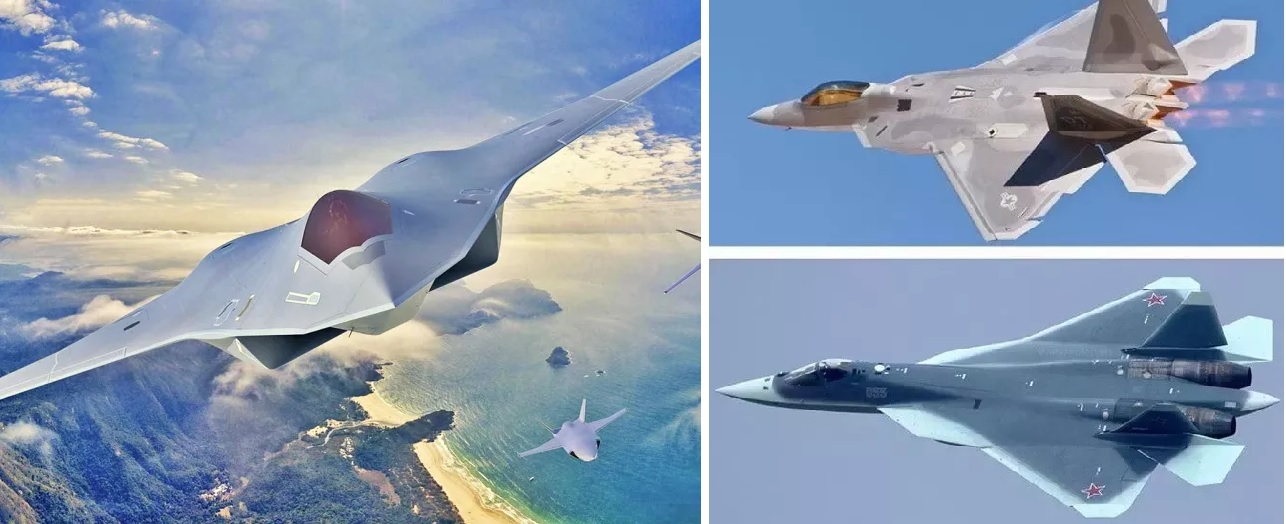 Key Differences Between 5th vs. 6th Generation Fighter Jets
Key Differences Between 5th vs. 6th Generation Fighter Jets
-
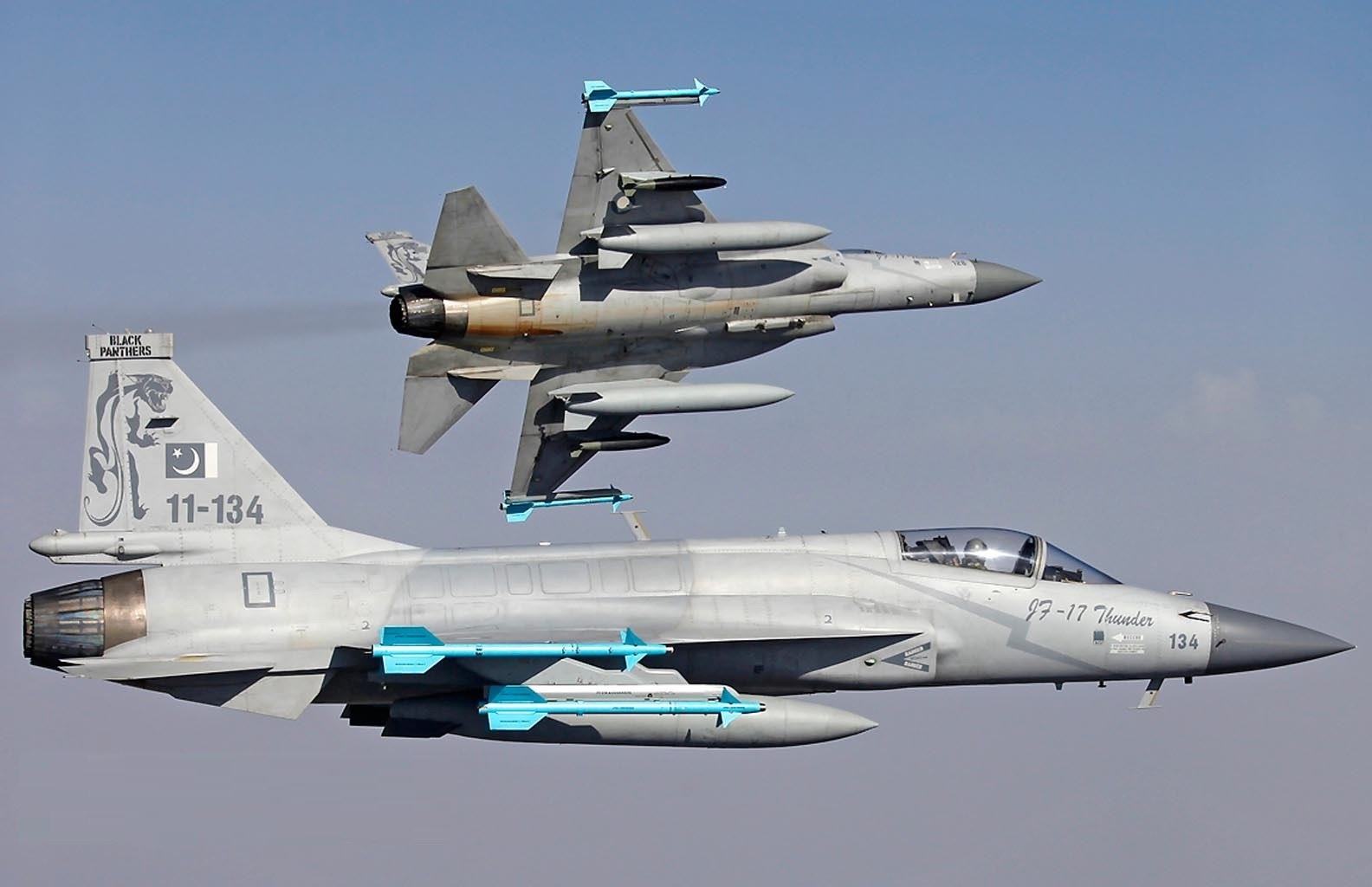 Pakistan Air Force to Unveil Stealth-Enhanced JF-17 Block 4 Fighter Jet by 2028
Pakistan Air Force to Unveil Stealth-Enhanced JF-17 Block 4 Fighter Jet by 2028
-
 India’s AMCA Engine Decision: Safran vs. Rolls-Royce Final Expected by 2025
India’s AMCA Engine Decision: Safran vs. Rolls-Royce Final Expected by 2025
-
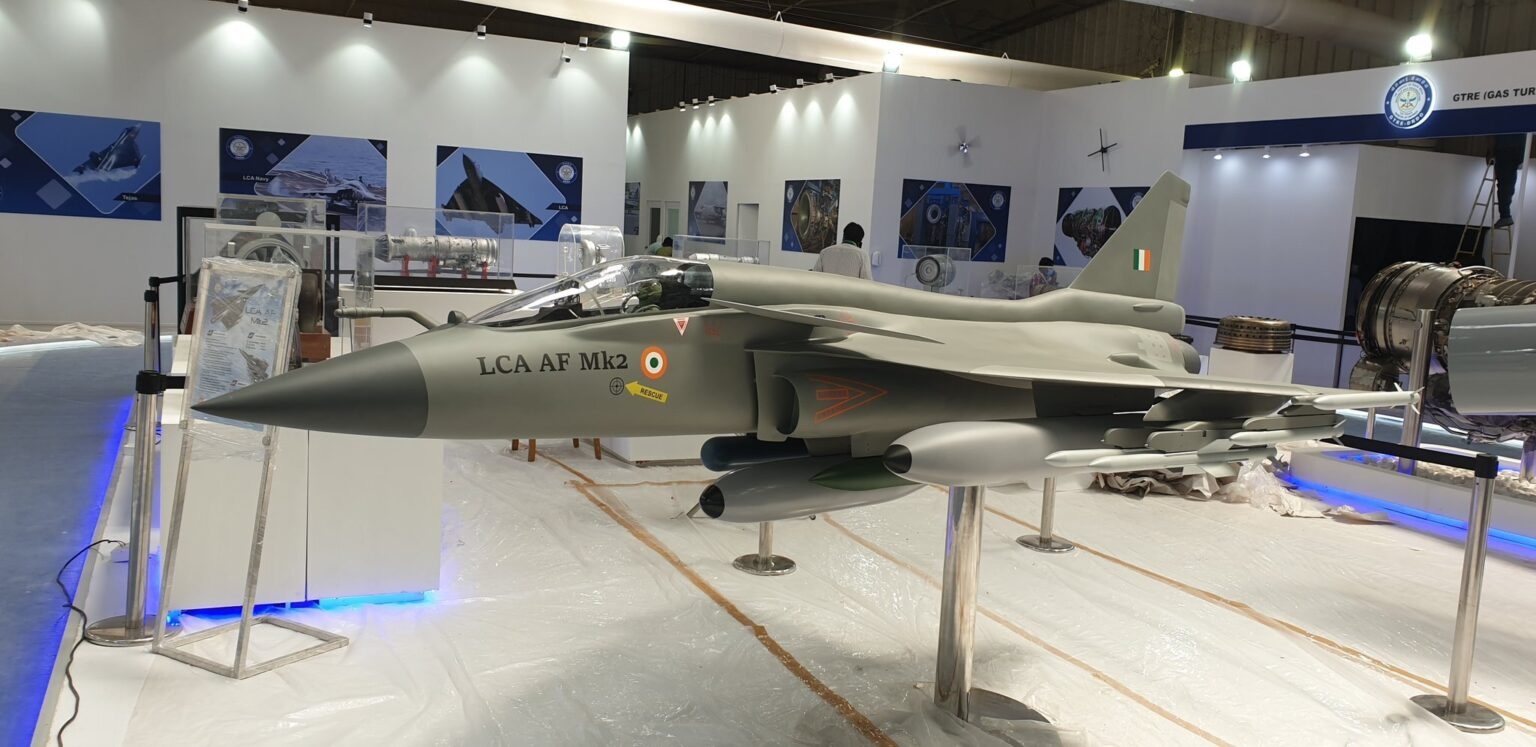 Tejas Mk2 Nears 2025 Rollout as HAL Ramps Up Final Assembly and System Integration
Tejas Mk2 Nears 2025 Rollout as HAL Ramps Up Final Assembly and System Integration
-
 Pakistan Announces 15% Increase in Defence Budget for 2024-25 Amid Economic Crisis
Pakistan Announces 15% Increase in Defence Budget for 2024-25 Amid Economic Crisis
-
 India's TEDBF Program Takes Shape First Flight by 2028: Aiming for Naval Supremacy with Advanced Stealth and Technology
India's TEDBF Program Takes Shape First Flight by 2028: Aiming for Naval Supremacy with Advanced Stealth and Technology
Top Trending in 4 Days
-
 Pakistan Army to Deploy Troops to Gaza by January 2026 Under Trump–Munir Deal, $500 Per Soldier
Pakistan Army to Deploy Troops to Gaza by January 2026 Under Trump–Munir Deal, $500 Per Soldier
-
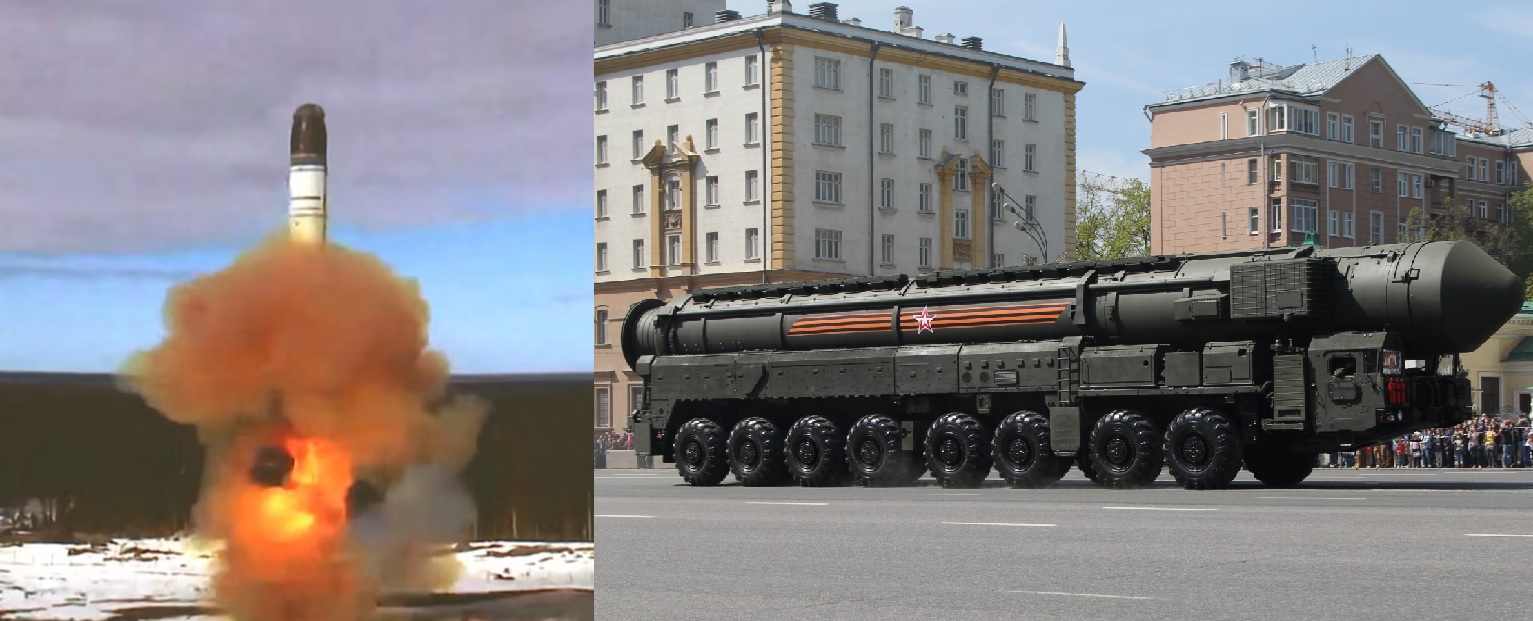 Russia Simulates Full-Scale Nuclear War in Siberia, Deploys Yars ICBMs on Combat Patrols
Russia Simulates Full-Scale Nuclear War in Siberia, Deploys Yars ICBMs on Combat Patrols
-
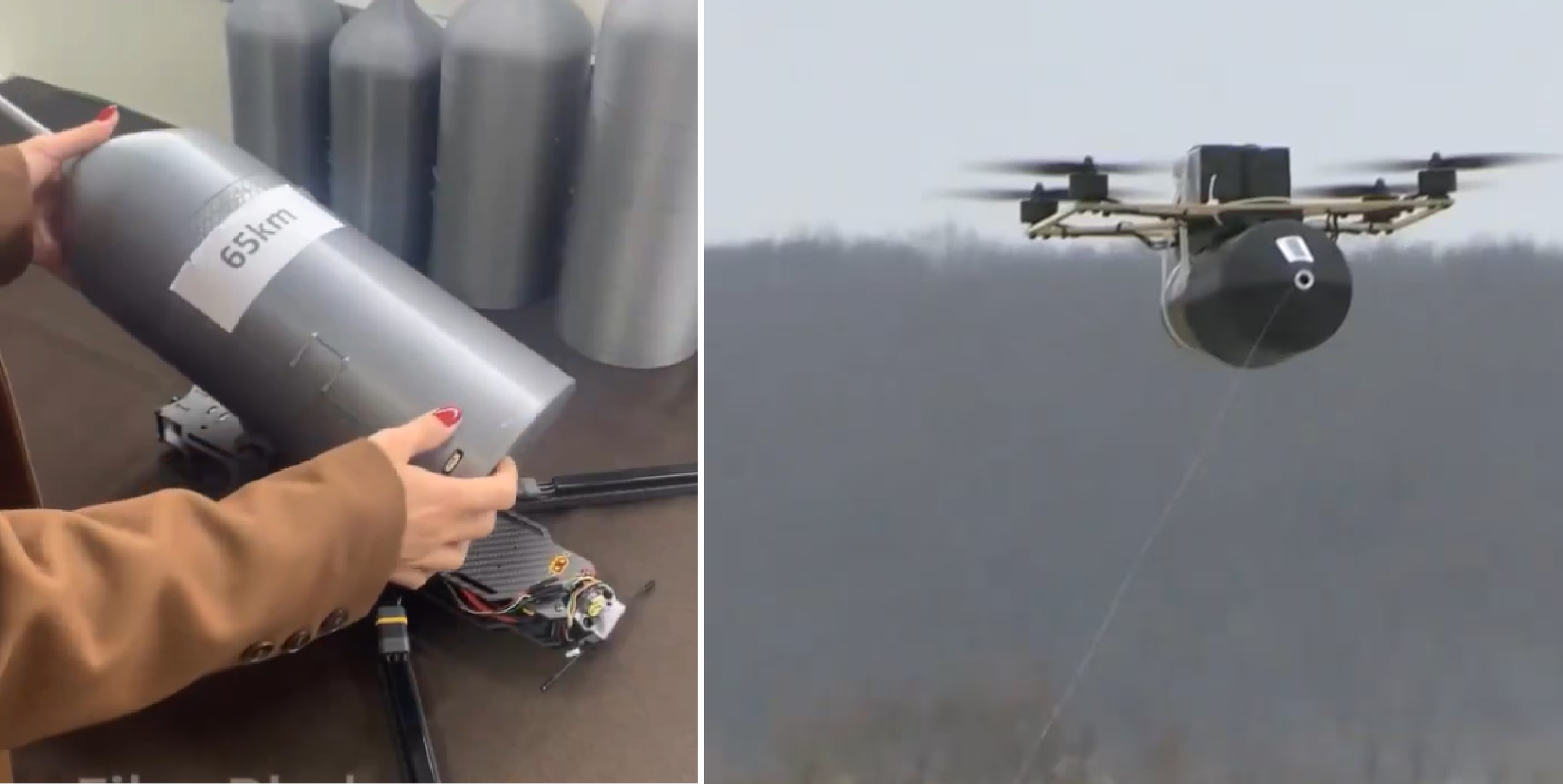 Russia Claims Test of 65-Kilometre Fiber-Optic FPV Drone Link
Russia Claims Test of 65-Kilometre Fiber-Optic FPV Drone Link
-
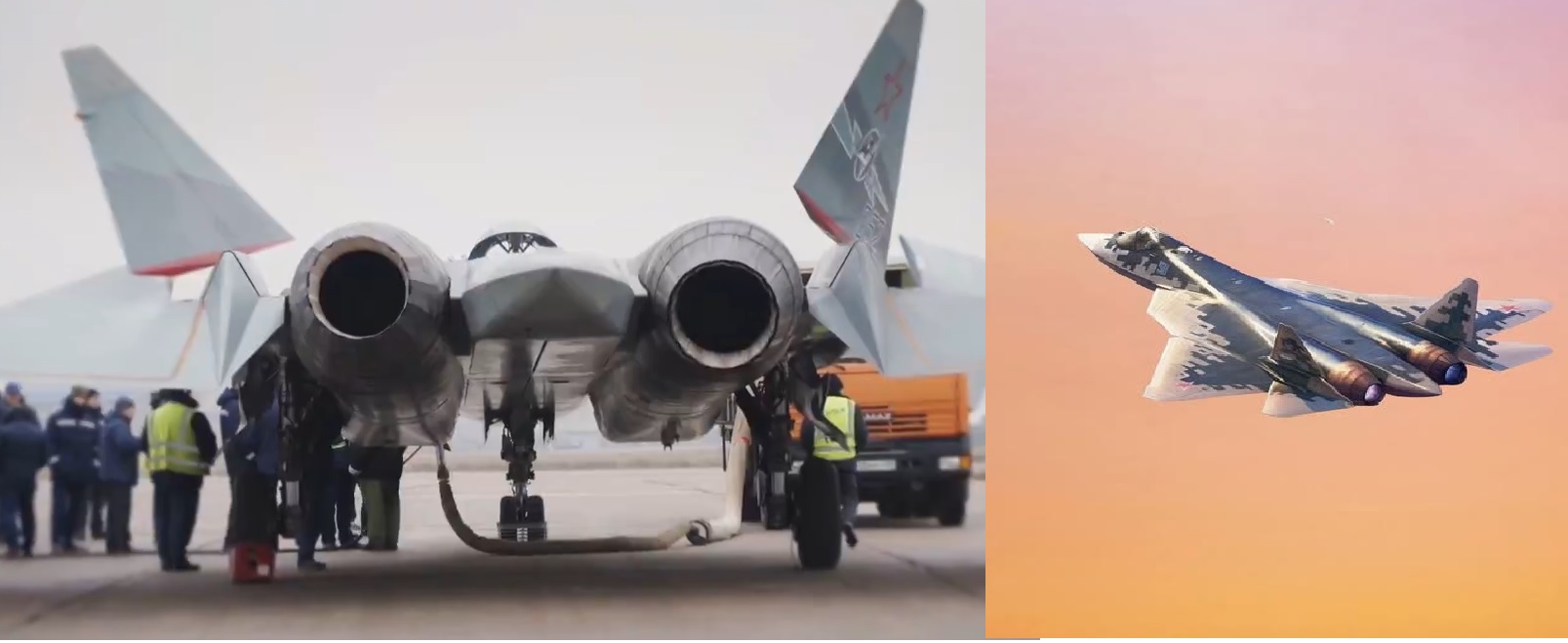 Russian Su-57 Conducts First Flight With Next-Generation Izdeliye-177 Engine
Russian Su-57 Conducts First Flight With Next-Generation Izdeliye-177 Engine
-
 Russian Strike on Mayaki Bridge Threatens Up to 60% of Ukraine’s Fuel Supply
Russian Strike on Mayaki Bridge Threatens Up to 60% of Ukraine’s Fuel Supply
-
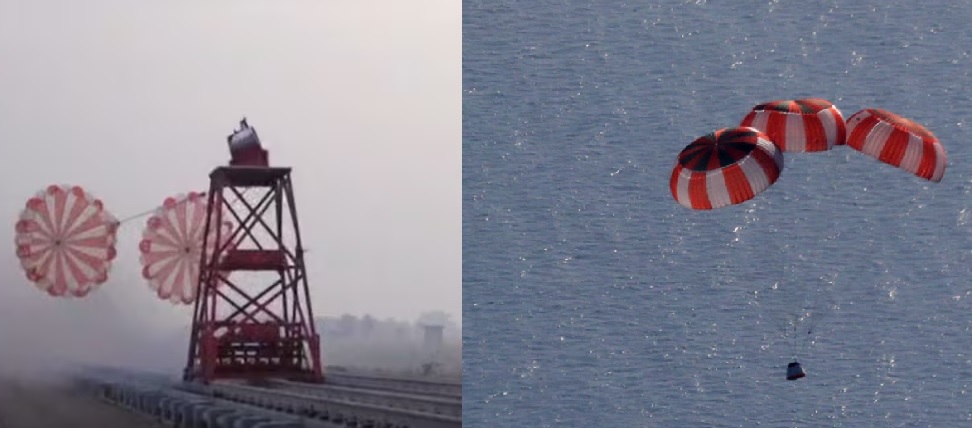 ISRO Successfully Qualifies Drogue Parachutes for Gaganyaan Crew Module
ISRO Successfully Qualifies Drogue Parachutes for Gaganyaan Crew Module
-
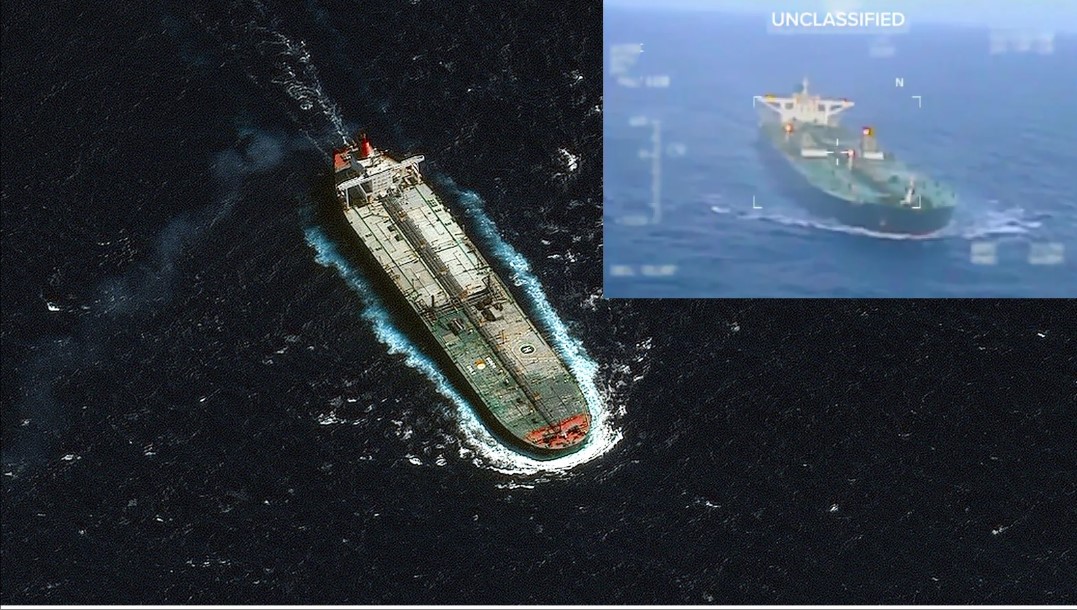 U.S. Seizes China-Linked Oil Tanker Carrying Venezuelan Crude in International Waters
U.S. Seizes China-Linked Oil Tanker Carrying Venezuelan Crude in International Waters
-
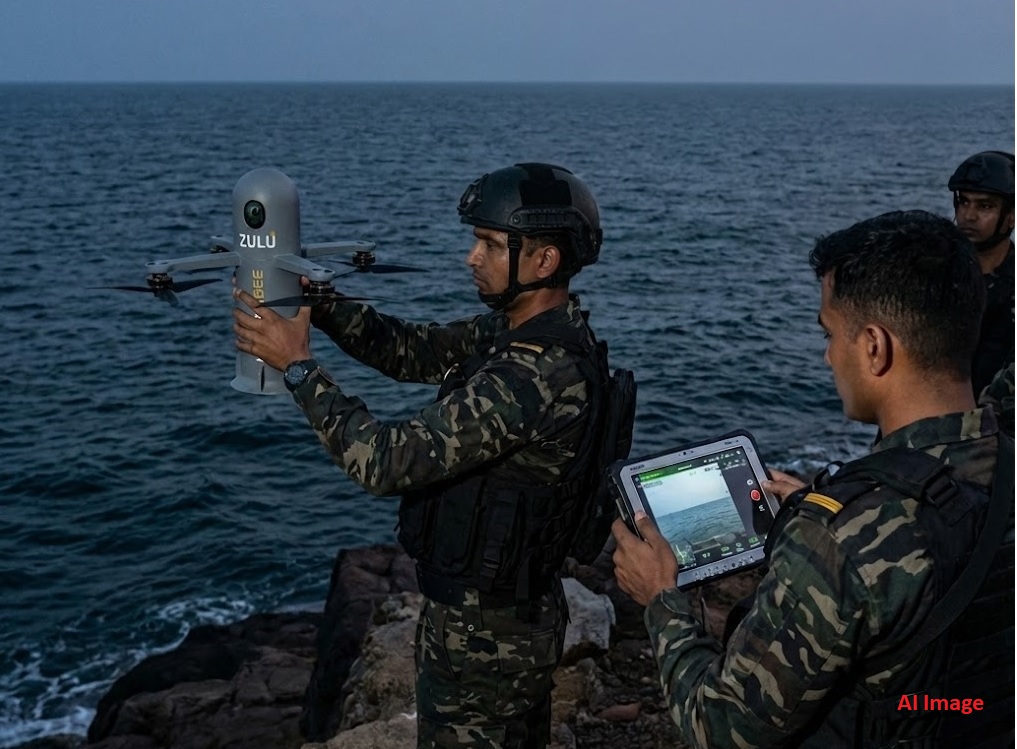 Indian Navy’s MARCOS Induct High-Tech ‘Hoverbee’ Kamikaze Drones for Stealth Operations
Indian Navy’s MARCOS Induct High-Tech ‘Hoverbee’ Kamikaze Drones for Stealth Operations
